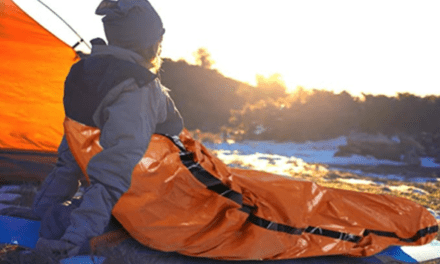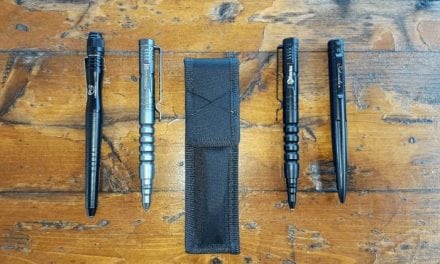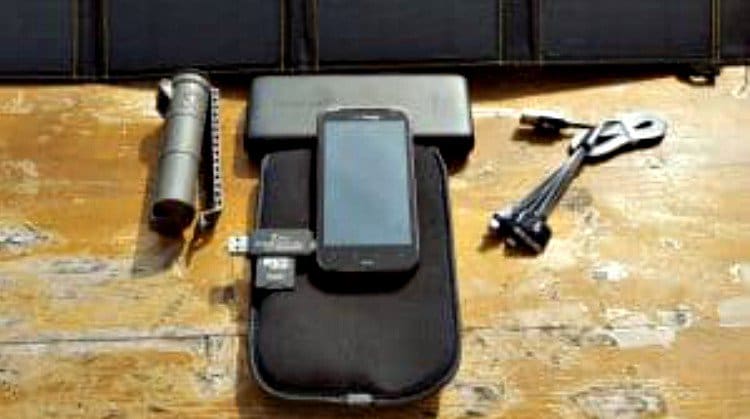
When it comes to emergency preparedness, every day is a new learning experience. At times, it feels like the more that I learn, the greater the realization of how much I truly don’t know. Educating myself in Survival Tech is an ever changing learning experience.
Survival Tech: Accessing Crucial Information When SHTF
Luckily, there are vast resources that I can use to gain access to information that I am not well versed in. The Internet is packed with quality information from credible sources. When I am home, I have countless field manuals, textbooks and even video tutorials that I can utilize to gain answers to my questions. If I am able to bug in during a SHTF situation, I am good to go. The issue is that during an emergency scenario, I may have to leave all of that information behind in order to seek safety for me and my family.
In a crisis, having to move out of foot may be my only chance at survival. My go bag is staged with all sorts of gear that is catered to my needs as well as my training. I am very methodical when choosing the contents of my main go bag. Adding extra weight to my kit is not something that I take lightly. I never truly know how far I will need to move in order to get to safety. The length of time that I will be humping my go bag is also an unknown.
Realizing that I am ignorant in many subjects relating to preparedness (Dentistry, Plant ID, Advanced Wilderness First-Aid, etc.) I need access to this information in order to increase mine and my family’s chances of survival. I realize that I cannot physically carry the extra 100+ pounds of books, manuals and archived video tutorials… So I needed to find a viable solution.
In the past, I chose to add a tablet to my go bag. My tablet was packed with information that I was lacking. It also contained a lot of survival basics in case I was out of commission and my family needed access to that info. Keep in mind that I may be away from my family when SHTF – or the one in need of care. Having a tablet packed with easy to access survival information, seemed like a good solution for this dilemma.
As I continued to refine my emergency plan I realized that I was depending on one piece of proprietary gear, my tablet, for my informational needs. If something were to happen to my tablet, I would no longer have access to this crucial data. I realized that everyone in my family and preparedness group has a smart phone. If I were to replace my tablet with information that can be tapped into from any smartphone, I would greatly increase my chances of having access to my much needed information.
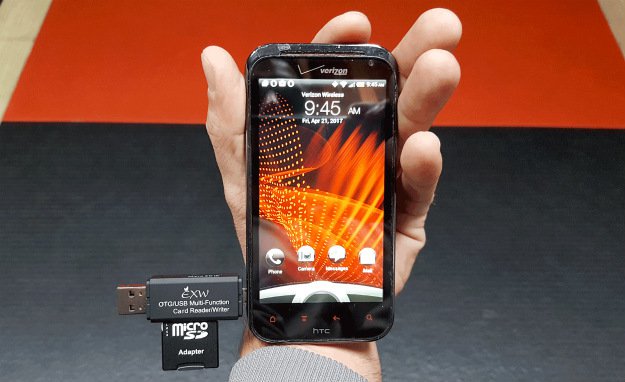
There are a few other items that I carry with me to maintain access to my data. These supplemental items have additional purposes so it is easy for me to justify their inclusion in my go bag. I’d like to share a few of these ideas with you as well as the reasons why I feel that they are a necessity.
Let’s Get Started…
Backup Phone:
When I upgrade to a new smartphone, I tend to either trade in the old phone or donate it to a good cause. A couple of upgrades ago, I decided to keep my old phone to utilize as a backup device for accessing info while I was out in the field. I completely wiped the information that was clogging up the old phone which gave me nearly 25gb of free space. The older phone also accepts SD cards so it basically has it’s own built-in SD card reader.
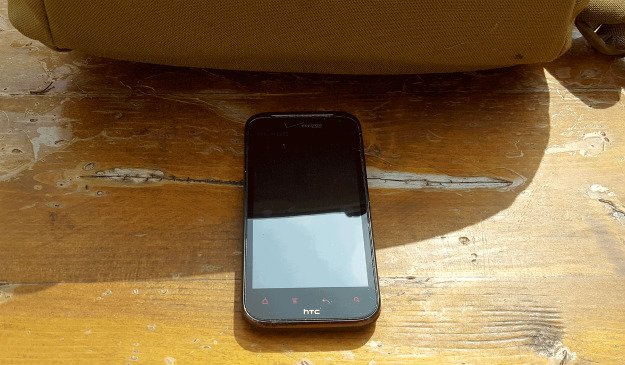
Not all emergency situations entail complete loss to the grid, including mobile and Internet service. In an emergency, I may need to use my primary smartphone for communication while using my backup phone to access the instructionals on my SD cards. Since my backup phone is small and lightweight, it makes the decision a no-brainer when choosing to add it to my go bag.
SD Card Reader For Smart Phones:
SD or SDHC card readers are readily available for phones. Luckily, they are also inexpensive so adding a few to your kit is a no brainer. They are available for both iPhones and Android devices. Some phones allow you to swap out the SD card saving you the need to add the additional card reader. But as I stated earlier… I do not want to rely on just one device when it comes to emergency preparedness.
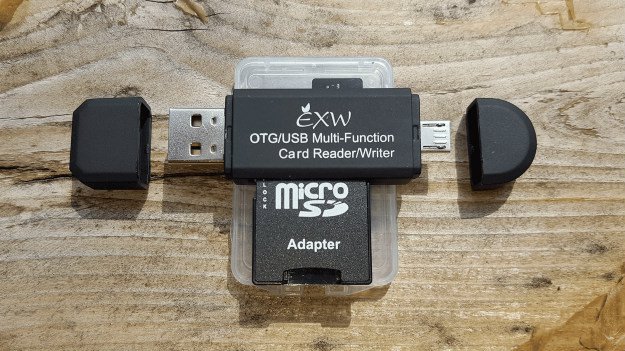
The benefit of the SD card reader is that it can be used on additional phones carried by other members of my group. If one phone fails, there is always another to fill the void. These card readers also have a USB connection so that you can access your data via any device that accepts USB.
SD/ SDHC Cards:
SD cards have been integrated into many devices over the past decade. My previous phones all contained SDHC cards. Once I upgraded to a new phone, I would keep the SD card to use in other devices. My GPS units and portable Ham radio devices also utilize SD cards. SD cards come in varied capacities and even speeds.
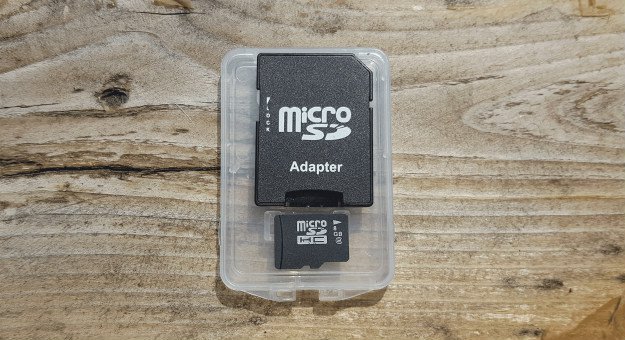
What I began to do with these extra SD cards is to copy my field manuals, texts, PDF’s and even compressed video files onto these cards. I keep my SD cards labeled so that I know which subject matter each card contains. As examples, I have a card containing knowledge on First Aid and another that is for Field Medicine. Some cards contain various TOPO maps and Ham radio frequencies for areas that I may end up operating in.
By including various SD cards in my kit, I have a mini-library containing life saving information. A few of my cards even contain some of my favorite movies in order to help me and my family pass the time as well as to keep our morale up. Since the SD cards are incredibly lightweight and inexpensive, I am continually adding to my collection.
USB Cables:
I’m not sure about your experience but in my household, we go through USB cables like they’re free!  Someone is either stepping on them or one of my pets decides to take a bite, in case it tasted like chicken… Either way, my USB cables end up unserviceable. Luckily, when it comes to most Android devices, micro USB cables have become quite standard for many devices. Being able to find one in an emergency shouldn’t cause much of an issue.
Someone is either stepping on them or one of my pets decides to take a bite, in case it tasted like chicken… Either way, my USB cables end up unserviceable. Luckily, when it comes to most Android devices, micro USB cables have become quite standard for many devices. Being able to find one in an emergency shouldn’t cause much of an issue.
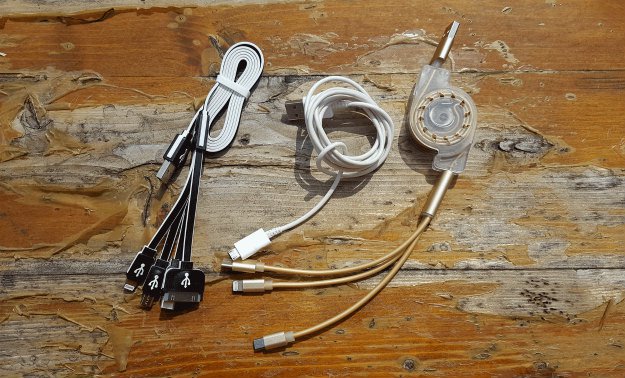
However, we do not want to be out and about looking for a USB cable when we are in the middle of a crisis. Including various USB cables for popular devices in your kit is certainly a good idea. Just like most of our gear, there are many choices when it comes to something as simple as a USB cable. I suggest spending the extra couple of dollars and get quality cables that feature good construction as well as fast transfer speeds.
Water & Crush Proof Container For SD Reader And SD Cards:
Having electronics out in the field is a bit different than having them staged in your home office. We need to think about weather damage as well as the rough treatment that our gear gets while we are on the move. I use a small container that is made to keep my components dry while simultaneously protecting them against drops and tumbles.
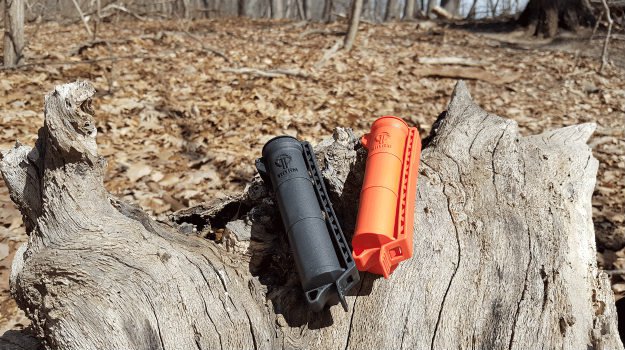
The other great feature about these small containers is that they can be staged on the outside of my backpack. I can gain access to my SD cards and readers without having to dig through my kit, wasting valuable time. With these particular containers, I do not even need to take them off the external webbing on my ruck, to gain access to the contents.
Battery Power Banks:
While on the move, I may not be able to access power to charge up my phone. I spent all this time gathering information, converting it, copying it to my SD cards and now my phone runs out of juice when I need that info the most… Not a very well thought out plan.

One of the ways that I combat this problem is by having a couple of battery banks that can charge my phones, and other USB devices, multiple times. These devices come in various capacities. The more power that they provide, the heavier and more expensive that they become. Your budget may not be an issue when it comes to these power banks, but the extra weight is always a concern. Choose wisely and get what works best for you.
Solar Charger Kit:
Having my devices with me out in the field is half the battle. The other consideration that I need to address is to keep my smartphone charged. I have a few different battery banks with me that may charge my smartphone 2-3 times but what about extended scenarios where the power grid goes down for a couple of weeks; possibly longer?
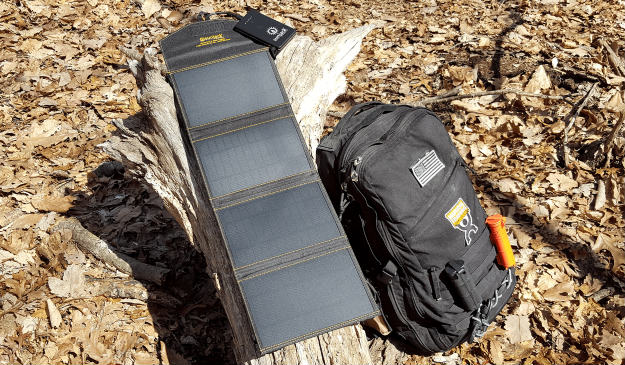
Solar chargers have grown in popularity over the past 2 years. Many new manufacturers have entered the market which has made a quality solar charger affordable. These chargers are designed for being on the move and are relatively lightweight for what you get. With my solar charger I can charge my smartphones as well as my power banks. They are also versatile enough to charge many of the USB devices that I require while I am on the move. Check out this solar battery charger, it’ll save a bunch of money by using FREE solar energy.
Small Dry Bag:
We both realize that electronics and water do not usually go well together. We may get caught in an unexpected downpour while on the move. Also, we may have to wade across a small body of water or just end up dropping our kit in a puddle. We need to make sure that all of our gear is protected against these situations. But when it comes to electronics, it is imperative that they remain dry.
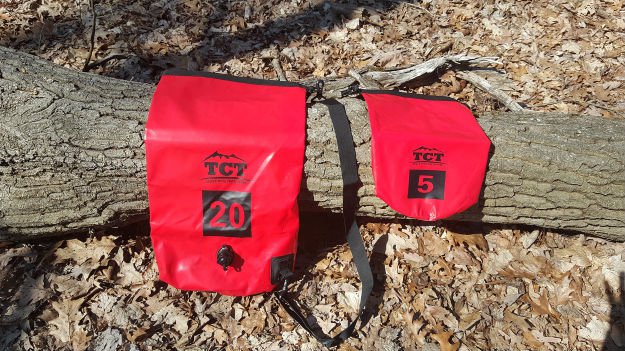
I carry a couple of dry bags in my kit. They are inexpensive, lightweight and multi-purpose. For my phones and cables, I have a small dry bag. This maintains the credibility of my phone but also aids in the organization of my gear. I know that when I need quick access to my phone and/or cables, I can reach in my pack and grab the small, red, dry bag and continue on with my mission.
Faraday Bag:
Many of us that are focused on preparedness, fear an EMP (Electromagnetic Pulse) attack that can be brought on by a number of factors. If an EMP attack were to happen, most if not all of our electronic devices will be rendered useless. One way to help protect your electronics against the EMP attack, while on the move, is with a faraday bag.

I keep my backup phone off and placed inside of a Faraday bag. I then place that Faraday bag inside of my small dry bag. Nothing is 100% foolproof when it comes to the unknowns that an EMP or nuclear EMP may cast upon us. However, we need to prepare the best that we can. If adding an extra layer of protection helps the cause… Then I am in favor of incorporating it into my plan.
Bottom Line:
Getting the data that I required for this type of solution is certainly time consuming. Not only do I need to gather the digital information but I need to convert it to make it easily accessible for most devices. Keeping the file sizes down when it comes to video tutorials is also an easy but lengthy task.
Like most of the aspects that we focus on for emergency management… It’s never easy! But it makes up for it by providing me much needed confidence. I am well aware that I do not Know It All so adding this bit of digital insurance allows me to sleep a bit better at night.
My family as well as my preparedness group also maintain copies of this digital information. We are all versed on how to access theses files and are continually adding to our knowledge bank. Since most of what I discussed in this article is relatively inexpensive and lightweight, each member can have access to critical knowledge whether they are moving out with our group or on their own.
Just like with most aspects of life, knowledge is key. Prepare now so that you can to have that crucial information available for both you and your loved ones.
Up Next: 10 Must Have Items You Need When Hiking With Your Dog
If you’re looking for useful survival gear that you can’t make at home, check out the Survival Life Store!
What do you think of this post on the 10 Must Have Items You Need When Hiking With Your Dog? Let us know in the comment section below.












![[Gear Review] Minimalist Footwear…an Ultralight Essential?](https://www.oelmag.com/wp-content/uploads/2017/07/gear-review-minimalist-footwearan-ultralight-essential-440x264.jpg)
